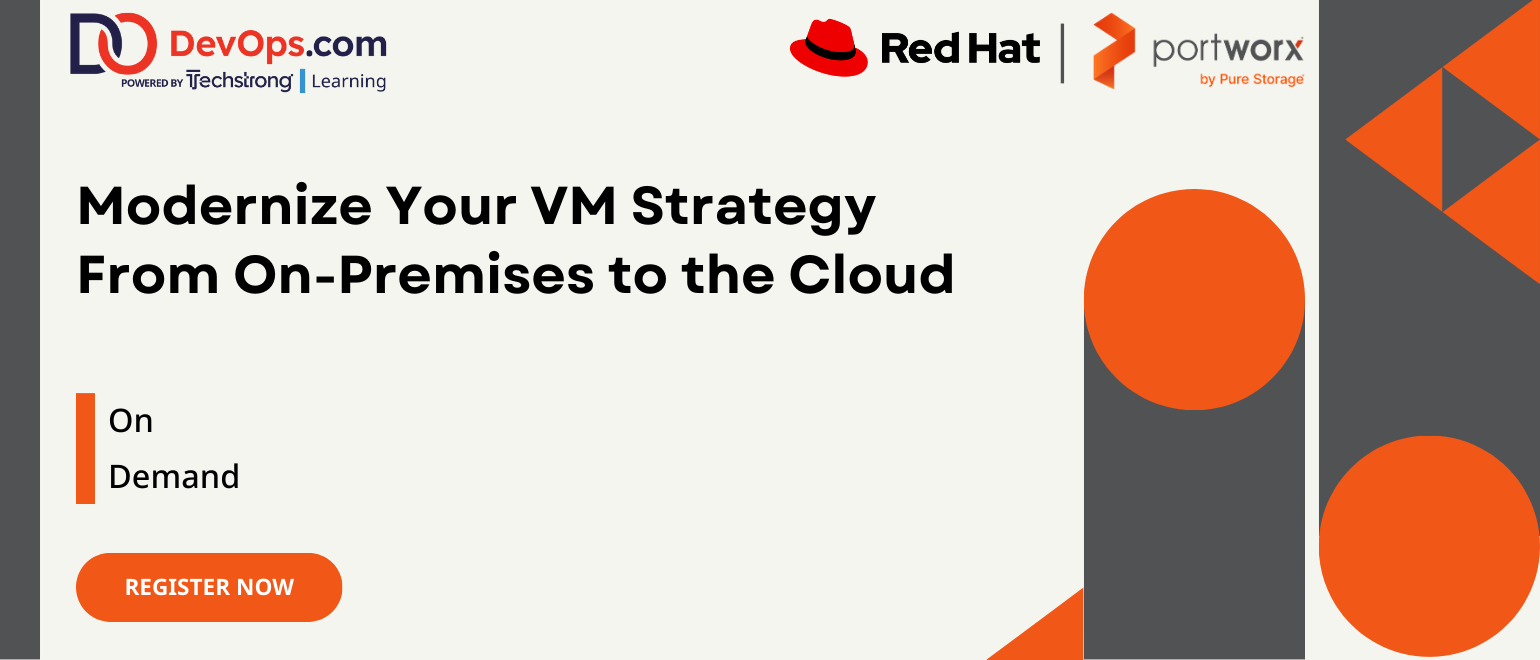Webinar
Think About Your Audience Before Choosing a Webinar Title

Sponsored by:

What You’ll Learn in This Webinar
While cloud-native development continues to grow, many enterprises still rely on a number of virtual machine (VM)-based applications or on databases that must live on top of VMs. Today, these companies are having to spend significant money to maintain both their virtual machine infrastructure alongside their Kubernetes infrastructure.
Red Hat OpenShift Virtualization, based on the KubeVirt project, addresses this challenge by providing VM infrastructure within Kubernetes clusters. This means that organizations can easily run applications in VMs alongside applications in containers, taking advantage of a common user experience and allowing them to rehost, refactor, redeploy or rebuild applications if and when they are ready as part of their app modernization efforts.
But what about data management? Stateful applications in Kubernetes require persistent storage and critical applications require business continuity. The Portworx Platform simplifies, optimizes and automates data management for applications running in both containers and virtual machines in Red Hat OpenShift. In this Techstrong Learning Experience, experts from Portworx and Red Hat will explore the modern virtualization strategies that provide enterprises with a roadmap for long-term success.
You'll learn:
- How you can modernize your VM strategy
- How to maintain enterprise-grade features across both on-premises and public cloud deployments
- How Portworx and Red Hat are partnering to deliver the cloud operating model of the future







